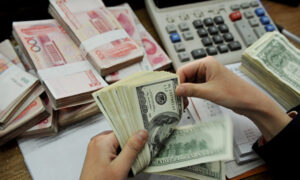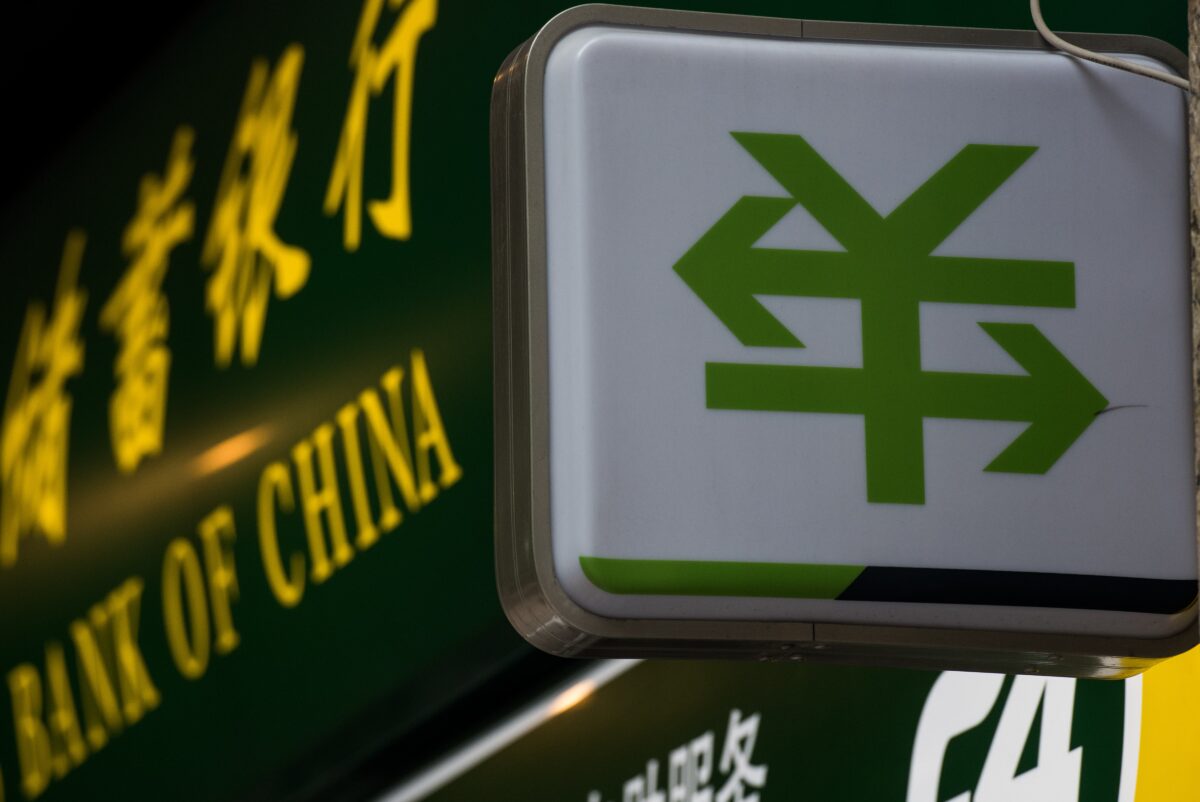Beijing’s Dubious Yuan Dreams
CommentaryChinese leader Xi Jinping just completed a successful trip to the Middle East. There he stressed trade relations with oil-rich nations, especially Saudi Arabia. Xi also made clear a strong desire for oil contracts to settle in yuan and not, as usual, in dollars. He made no secret that his goal was to advance Beijing’s ambition for the yuan to eventually replace the dollar as the world’s primary reserve currency. Some day that might happen. If it does, it will take a very long time. Stranger things have happened. The time reflects the yuan’s present inadequacies. It effectively lacks all three key attributes that any currency needs to lead as a global reserve. First, it can hardly claim to command worldwide acceptance as a basis for trade and import and export contracting. According to the figures for the first half of 2022, only some 2 percent of global import and export contracts are denominated in yuan or settled in yuan. That is well up for five or ten years ago but still well short of the dollar. The dollar and the euro combined account for 75 percent of world trade contracts and settlements. Nor does the yuan fare much better with the second necessary attribute of a reserve currency: as a vehicle for currency trading. This year, according to the Bank for International Settlement in Basel, Switzerland, some 7 percent of global currency trading happened in yuan. China’s currency received an extra fillip this past year because Western sanctions against Russia made Chinese links valuable to anyone who wanted to buy or sell in Russia and, of course, China. At the present elevated level, the yuan has surpassed both the Canadian and the Australian dollar in this regard, as well as the Swiss franc. But even with this year’s special jump, the yuan falls far short of the amount of currency trading done in the euro, Japan’s yen, or the pound sterling. And it is well behind the dollar, which dominates some 90 percent of all global currency trading. A Chinese yuan currency sign with two arrows is pictured outside a bank branch of the People’s Bank of China in Shanghai on Aug. 13, 2015. (Johannes Eisele/AFP via Getty Images) Preferences by central banks to hold each currency in reserve get to this matter from a different perspective. The yuan clearly is not preferred. Some 70 central banks do hold yuan in reserve, a much greater number than a few years ago. Still, according to the International Monetary Fund (IMF), these holdings amount to only 2.25 percent of the global total. That figure falls short of the euro, for example, which amounts to some 20.6 percent of global central bank reserves, or even the yen, which amounts to 5.8 percent. The yuan’s role certainly falls far short of the dollar, which amounts to about 59 percent of these reserves. As should be apparent from the trading proportions mentioned above, the dollar, on strictly practical grounds, should have a higher proportion of central bank reserves than it does. Diplomacy and politics explain this difference. Perhaps the greatest of the yuan’s inadequacies concerns the third attribute needed by a reserve currency: support from financial markets. A reserve currency not only needs to be widely used and traded, but because importers, exporters, and those who support them financially must hold assets in the reserve currency. The markets denominated in it must offer a wide range of investment options: short-term liquid deposits, for example, longer-term bonds, stocks, options, futures, forward contracts, and the like. Acceptable financial markets must also offer people the ability to trade in and out of such investments quickly and easily. All are required to allow those involved the greatest flexibility at the least cost. Dollar-based markets—in the United States and elsewhere—offer an abundance of such support. Yuan-based markets, by contrast, are much thinner and more tightly controlled. A sense of this difference emerges from comparing the relative size of financial markets in the United States and China. U.S. equity markets amount to about 33 percent of all global stocks, whereas China’s stock market equals slightly less than 8 percent of the global total. In bonds, the figures are respectively 39 percent and 17 percent. Vast as these differences are, they do not capture the still wider difference in the sorts of investment and trading vehicles offered in dollar-based markets but are limited or non-existent in yuan-based markets. As China’s economy grows, the yuan will gain as a portion of global trade, currency trading, and even reserves held by the world’s central banks. It will, however, take a long time to challenge the dollar, especially now that China’s economy and trade will likely grow at a slower pace than previously. Moreover, the undeniable need for control exhibited by the country’s communist leadership makes it doubtful that China will ever permit the open, flexible financial markets needed to support a global reserve

Commentary
Chinese leader Xi Jinping just completed a successful trip to the Middle East. There he stressed trade relations with oil-rich nations, especially Saudi Arabia.
Xi also made clear a strong desire for oil contracts to settle in yuan and not, as usual, in dollars. He made no secret that his goal was to advance Beijing’s ambition for the yuan to eventually replace the dollar as the world’s primary reserve currency. Some day that might happen. If it does, it will take a very long time. Stranger things have happened.
The time reflects the yuan’s present inadequacies. It effectively lacks all three key attributes that any currency needs to lead as a global reserve.
First, it can hardly claim to command worldwide acceptance as a basis for trade and import and export contracting. According to the figures for the first half of 2022, only some 2 percent of global import and export contracts are denominated in yuan or settled in yuan. That is well up for five or ten years ago but still well short of the dollar. The dollar and the euro combined account for 75 percent of world trade contracts and settlements.
Nor does the yuan fare much better with the second necessary attribute of a reserve currency: as a vehicle for currency trading. This year, according to the Bank for International Settlement in Basel, Switzerland, some 7 percent of global currency trading happened in yuan. China’s currency received an extra fillip this past year because Western sanctions against Russia made Chinese links valuable to anyone who wanted to buy or sell in Russia and, of course, China.
At the present elevated level, the yuan has surpassed both the Canadian and the Australian dollar in this regard, as well as the Swiss franc. But even with this year’s special jump, the yuan falls far short of the amount of currency trading done in the euro, Japan’s yen, or the pound sterling. And it is well behind the dollar, which dominates some 90 percent of all global currency trading.

Preferences by central banks to hold each currency in reserve get to this matter from a different perspective. The yuan clearly is not preferred. Some 70 central banks do hold yuan in reserve, a much greater number than a few years ago. Still, according to the International Monetary Fund (IMF), these holdings amount to only 2.25 percent of the global total. That figure falls short of the euro, for example, which amounts to some 20.6 percent of global central bank reserves, or even the yen, which amounts to 5.8 percent. The yuan’s role certainly falls far short of the dollar, which amounts to about 59 percent of these reserves. As should be apparent from the trading proportions mentioned above, the dollar, on strictly practical grounds, should have a higher proportion of central bank reserves than it does. Diplomacy and politics explain this difference.
Perhaps the greatest of the yuan’s inadequacies concerns the third attribute needed by a reserve currency: support from financial markets. A reserve currency not only needs to be widely used and traded, but because importers, exporters, and those who support them financially must hold assets in the reserve currency. The markets denominated in it must offer a wide range of investment options: short-term liquid deposits, for example, longer-term bonds, stocks, options, futures, forward contracts, and the like.
Acceptable financial markets must also offer people the ability to trade in and out of such investments quickly and easily. All are required to allow those involved the greatest flexibility at the least cost. Dollar-based markets—in the United States and elsewhere—offer an abundance of such support. Yuan-based markets, by contrast, are much thinner and more tightly controlled.
A sense of this difference emerges from comparing the relative size of financial markets in the United States and China. U.S. equity markets amount to about 33 percent of all global stocks, whereas China’s stock market equals slightly less than 8 percent of the global total. In bonds, the figures are respectively 39 percent and 17 percent. Vast as these differences are, they do not capture the still wider difference in the sorts of investment and trading vehicles offered in dollar-based markets but are limited or non-existent in yuan-based markets.
As China’s economy grows, the yuan will gain as a portion of global trade, currency trading, and even reserves held by the world’s central banks. It will, however, take a long time to challenge the dollar, especially now that China’s economy and trade will likely grow at a slower pace than previously. Moreover, the undeniable need for control exhibited by the country’s communist leadership makes it doubtful that China will ever permit the open, flexible financial markets needed to support a global reserve currency. Unless China changes dramatically, it is more likely that some other currency or system will replace the dollar before the yuan has a chance. However, nothing is presently on the horizon.
Views expressed in this article are the opinions of the author and do not necessarily reflect the views of The Epoch Times.












